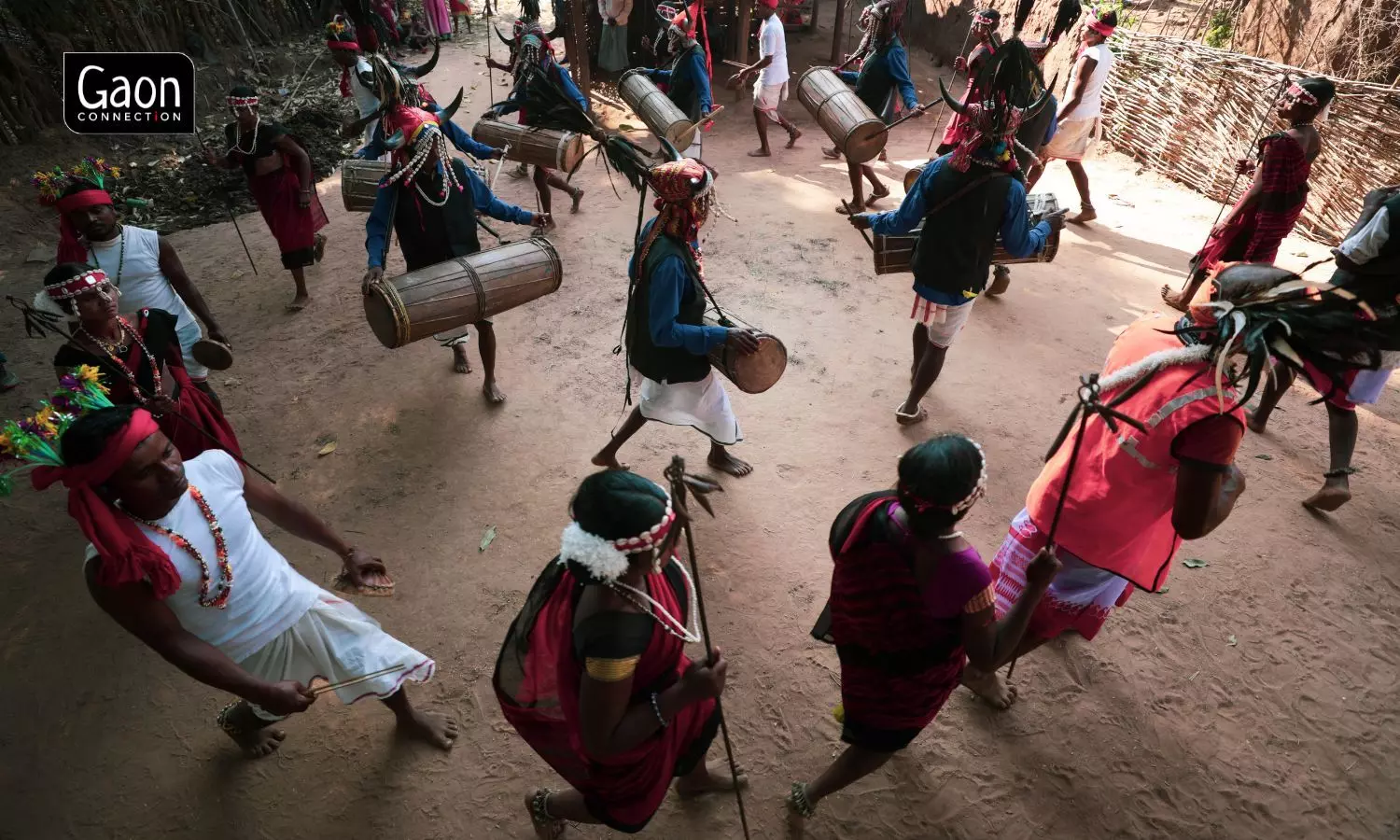Photo Feature: In the tribal heartland of Bastar with the Bison Horn Maria tribe
The Bison Horn Maria tribe is one of the oldest Adivasi communities in central India. Menfolk of this tribe wear traditional headdress made of bison horns, decorated with cowrie shells and bird feathers. Women, too, wear headbands made of cowrie shells and a lot of silver jewellery.
 Abhishek Verma 3 Sep 2022 8:40 AM GMT
Abhishek Verma 3 Sep 2022 8:40 AM GMT

Women sing songs and carry sticks called tirududi and tap them on the ground too in rhythm with the drumbeats. All photos: Abhishek Verma
Bastar, Chhattisgarh
Bastar is often referred to as the tribal heartland of India with a rich heritage and unexplored natural wealth. About 70 per cent of the population in this district in the central Indian state of Chhattisgarh is tribal.
The major tribes of the Bastar region include the Gond, Abhuj Maria, Bhatra, Halba, Dhurvaa, Muria and Bison Horn Maria. Each of these adivasi communities has its distinct cultural identity and a unique lifestyle with its own pantheon of gods and goddesses, festivals, and foods.
Bison Horn Maria is one of Bastar's iconic tribes. The menfolk wear their traditional headdress made of bison horns, decorated with bird feathers and cowrie shells. The women are fond of wearing a lot of silver jewellery and also wear headbands made of cowrie shells.
Together, the men and women perform the bison horn dance. The men play the cylindrical mandar drum slung on their shoulders as they dance while the women keep the beat as they strike the ground rhythmically with a long iron pole in their right hands. Mandar drums are heavy and made from hollowed tree trunks.
The bison horn dance is performed on social occasions, festivals, and at the time of the harvest.
The headgear was traditionally made with the horns of wild bison. But, with the bison population declining, the horns have been replaced by wood/ bamboo frames with feathers of the peacock or jungle fowl.
The headdress in the Bison Horn Maria tribe is considered precious and is passed down from father to son.
A bamboo trumpet heralds the beginning of the dance performance. And, along with the mandar drums that are slung on their shoulders, men also play the flute.
Gaon Connection takes you on a musical journey into tribal Bastar. Tap your feet and sway to the beats of the mandar drums.
Bison Horn Maria men play the mandar drums with hands or using wooden sticks.
The men and women perform the bison horn dance with the men playing the cylindrical mandar drum while the women strike the ground rhythmically with a long iron pole.
The bison horn dance is performed on social occasions, festivals, and at the time of the harvest.
The headdress of Bison Horn Maria men is decorated with feathers and cowrie shells.
The headgear was traditionally made with the horns of wild bison.
Women of the Bison Horn Maria tribe wear headbands made of cowrie shells and dress up with silver jewellery.
The importance of the headdress in the Bison Horn Maria tribe can be gauged by the fact that it is passed down from father to son.
The men and women perform the bison horn dance with men playing the cylindrical mandar drum.
The headgear was traditionally made with the horns of wild bison. But, with the bison population declining fast, the horns have been replaced by wood/ bamboo frames.
Mandar drums are heavy and made out of hollowed tree trunks.
#bastar #dance #tribal #story #GaonConnectionPhotoFeature
More Stories




